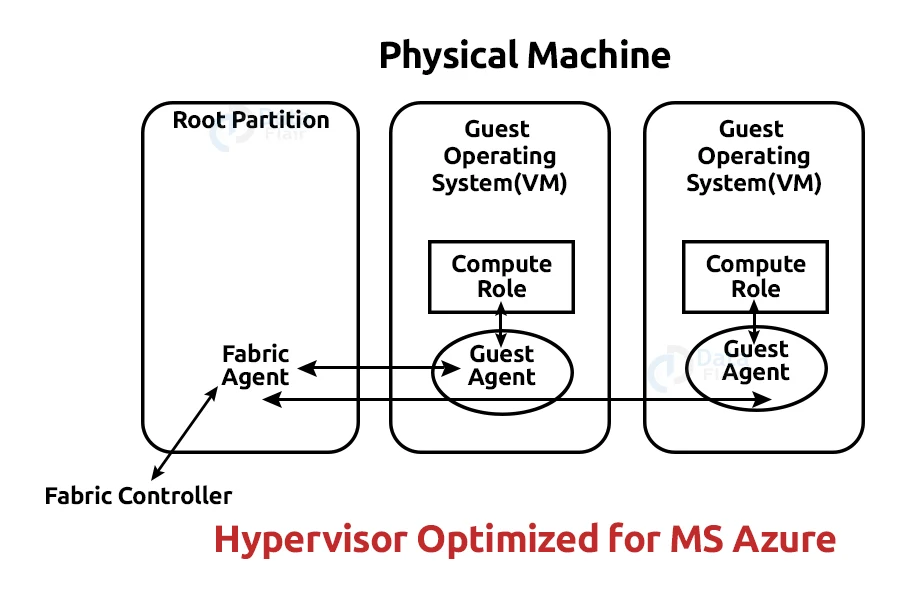Microsoft Azure Fabric Controller
Free AWS Course for AWS Certified Cloud Practitioner (CLF-C01) Start Now!!
FREE Online Courses: Dive into Knowledge for Free. Learn More!
Azure is one of the most popular cloud platforms which is provided by Microsoft. Azure provides a wide range of services that are helpful for all industries. Startups like to adopt Azure because of its cost-efficiency. So, in today’s article, we will discuss one of the core features of Microsoft Azure which is very popular among the users. Today we will discuss the Fabric Controller in detail. So, let us begin.
What is Microsoft Azure Service Fabric?
Microsoft’s Azure Service Fabric is well known as a distributed system platform that makes it easy to package, deploy, manage, scale the microservices and containers. Services fabric also helps to manage the challenges such as developing and managing cloud applications.
Service Fabric smoothly runs with several Microsoft services, which includes the following:
- Microsoft Azure SQL Database
- Microsoft Azure Cosmos DB
- Microsoft Cortana
- Microsoft Power BI
- Microsoft Intune
- Microsoft Azure Event Hubs
- Microsoft Azure IoT Hub
- Microsoft Dynamics 365
- Skype for Business and several other core Azure services.
What is Container Orchestration?
Service Fabric is Microsoft’s container orchestrator which is used for deployment and management of the microservices around the machine clusters. Service Fabric helps to deploy the applications within a few seconds with a wide number of applications or containers per machine. By using service fabric the user can mix both the services that are in process and the services running in the containers with the same application.
What is Microsoft Azure Fabric Controller?
Microsoft Azure Fabric Controller which is also known as FC is one of the core parts of the Windows Azure platform. Its main responsibility is to monitor, manage and coordinate the resources that are required for software applications.
Microsoft Fabric Controller will function as the kernel which will help to interact with the users with Microsoft’s Azure operating System. Along with that, it will provide, store, deliver, monitor and will instruct the virtual machines and physical servers in Microsoft Azure.
Microsoft Azure Fabric Controller Architecture
In every Microsoft’s data center, there are several machines or servers which are aggregated with the help of a switch. And, the fabric controller is the heart or we can say the brain in the Azure service which will analyze, process and finalize the decisions. Basically, fabrics are a set of machines that are running in the data center which are aggregated with the help of a switch. And the set of these machines is titled the cluster.
Every cluster will be managed and be owned by a fabric controller and they will be replicated along with these machines. It will take the responsibility to manage all the factors inside the machines. Every machine will also have a fabric agent that is operating inside it and the fabric controller is capable of communicating with the fabric controller.
Microsoft Azure provides five types of virtual machines and when the user selects the virtual machine its factors such as operating system, patch updates and everything is taken care of by the fabric controller. It will make the decision about where the application should run and operate which is one of the core functions provided by Fabric Controller. It will also take the physical server and optimize the hardware utilization.
When the new application gets published in Microsoft Azure the configuration file will be put down in the XML format along with that it will also get attached. The fabric controller will read these files located inside Microsoft’s data center and then make the configurations accordingly.
Along with that if any application requires additional resources, Fabric Controller will also manage the resources allocation for it. It will also monitor the health and if there are any failures or issues in a system it will make the recoveries for the system.
Uses of Microsoft Azure Fabric Controller
One of the main objectives of Microsoft Azure’s Fabric Controller is to manage the raw computing power and hardware resources that are available or running on Azure. Below, we have mentioned some of the uses of Microsoft Azure’s Fabric Controller. They are as follows:
- Firstly, Azure Fabric Controller is useful to monitor the utilization, availability and server capacity.
- Secondly, users mainly use Azure’s Fabric Controller to allocate compute, memory and storage resources to all the virtual machines.
- It is also useful to optimize the resource distribution for foremost application performance.
- Lastly, users take the help of Azure Fabric Controller for automating load balance, it also ensures great speed and helps to quickly scale the resources.
Conclusion
Finally, we have reached the last section of the article and in today’s article, we have gained knowledge about Microsoft Azure’s Fabric Controller. We hope you found today’s article helpful and enjoyed reading it.
We work very hard to provide you quality material
Could you take 15 seconds and share your happy experience on Google


